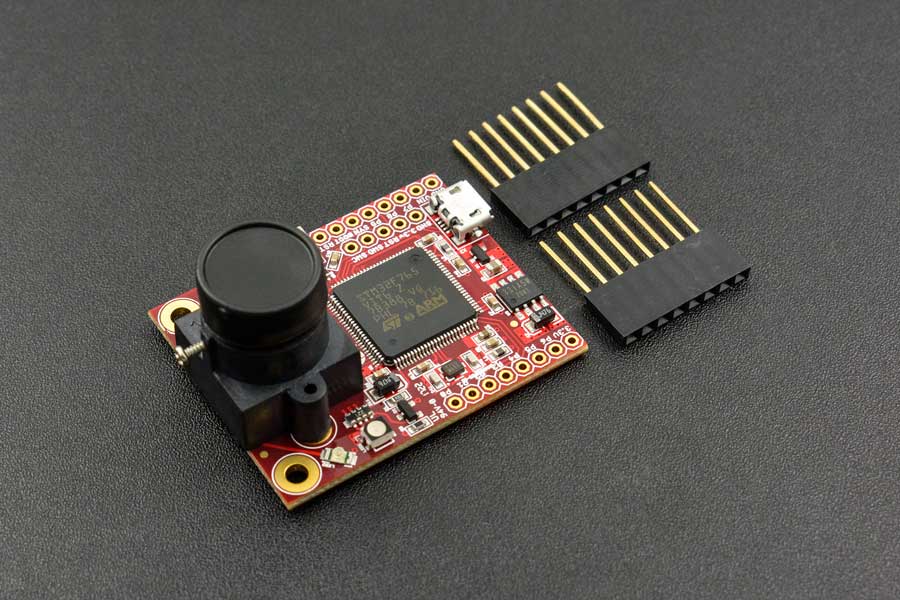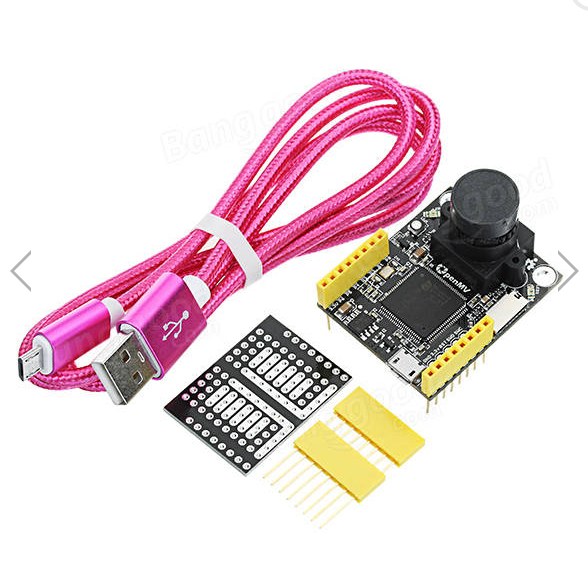A very promising new board hit the market last year. It is the OpenMV M7 Camera module. You can find more info on the official website of the project here.
The project started as a Kickstarter campaign three years ago which managed to raise 100.000$ to bring the idea from paper to reality.
The project aims to bring Machine Vision closer to makers and hobbyists. They want to become the Arduino of Machine Vision. I love this idea! Let’s see what the board offers.
The OpenMV M7 camera module features the following
Features of the OpenMV M7
- OV7725 Image sensor with a resolution of 640×480 pixels
- STM32F765VI ARM Cortex M7 processor
- CPU Frequency: 216MHz
- 512KB Ram Memory
- 2MB of FLASH memory
- microSD Card Slot
- A full-speed USB interface to the computer
- SPI, I2C, CAN buses
- 10 I/O pins
- A 12bit DAC and 12bit ADC
- And, an RGB LED and two high power 850nm IR LEDs.
- MicroPython support
- Low power consumption, about 1W
The OV7725 image sensor is capable of taking 640×480 8-bit Grayscale images or 640×480 16-bit RGB565 images at 60 FPS when the resolution is above 320×240 and 120 FPS when it is below. Most simple algorithms will run at above 30 FPS. Your OpenMV Cam comes with a 2.8mm lens on a standard M12 lens mount. If you want to use more specialized lenses with your OpenMV Cam, you can easily buy and attach them yourself.
The specs of the board are impressive. It is a very capable board that it will allow us to build projects that were impossible before. Let see some of the possible applications of this board:
Applications of the OpenMV M7
The OpenMV Cam can be used for the following things currently (more in the future):
- Frame Differencing
- Color Tracking
- Marker Tracking
- Face Detection
- Eye Tracking
- Optical Flow
- QR Code Detection/Decoding
- Data Matrix Detection/Decoding
- Linear Barcode Decoding
- AprilTag Tracking
- Line Detection
- Circle Detection
- Rectangle Detection
- Template Matching
- Image Capture
- Video Recording
The list of possible applications is impressive. With the use of this board, we can move our projects to the next level. The board can be programmed with an IDE developed specifically for this board. The board runs the MicroPython operating system so we can program the board using Python! How cool is that!
The cost of the board is around 65$, and it is available on DFrobot.com
I have also discovered a clone of it for 50$ on Banggood.com, get it here.
I have not tried any of these two boards yet to share with you my experience, but I am really excited to try them both. I will order them soon, and I will give them a try as soon as possible.
Machine Vision is an advanced topic I want to explore. Now that a dedicated Machine Vision board is available it is time to build my first project ever that will be able to “see” the world around it. I can’t wait to try the board. I think this is the future. Machine Vision is going to become really common in the following years. This board is just the beginning.


Leave A Comment